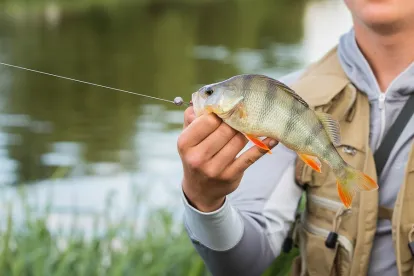In November, the National Marine Fisheries Service (NMFS or the Service) issued a final jeopardy opinion for 39 nearshore development projects in the Puget Sound region that had been under consultation with the U.S. Army Corps of Engineers (Corps). While the projects included marinas, residential developments, docks, and bulkheads, the majority of the projects were repair and replacement work for existing structures. In its consultation, NMFS determined that the projects did not include adequate mitigation to protect juvenile Puget Sound Chinook Salmon and the Southern Resident Killer Whale (SRKW) and requested significant increases in required mitigation to protect those species against extinction. The opinion, and the new mitigation framework created by NMFS, has the potential to significantly increase the cost of both new projects and repair and maintenance projects located on or near Puget Sound shorelines that require a federal permit for years to come, and prospective developers should be aware of these impacts as they consider development opportunities.
NMFS CONSULTATION
NMFS drafts jeopardy opinions to fulfill its statutory obligation under Section 7 of the Endangered Species Act (ESA), whereby a federal agency, the Corps in this instance, must ensure that its actions are not likely to jeopardize the continued existence of endangered or threatened species or adversely modify or destroy their designated critical habitat.1 In 2019, citing delays in consultation and NMFS staffing constraints, NMFS engaged with the Corps in an attempt to develop a programmatic consultation to address nearshore development (both new and repair/maintenance) in the Puget Sound region; however, NMFS and the Corps were not able to agree on a suitable framework for programmatic review.
Thereafter, NMFS issued a blanket Biological Opinion for 39 nearshore projects in Puget Sound that the Corps had submitted for ESA consultation between 1 May 2018 and 27 March 2020. While all these projects were located within the Puget Sound nearshore environment, they were varied in the type of development proposed and scale of the project. They included everything from significant repair and maintenance to the City of Seattle’s piers to repair of a residential bulkhead. It is notable that NMFS acknowledged that, in the case of nearshore repair and maintenance projects, most proposed projects would result in an improvement as compared to existing conditions. Many projects used mitigation calculators previously approved by the Corps and Washington Department of Fish and Wildlife to calculate impact and mitigation credits.
BIOLOGICAL OPINION
NMFS’s Biological Opinion analyzed the collective effects of the projects on ESA-listed species, concluding that the projects would result in incidental “take” of Chinook salmon and SRKW. “Take” is defined under the ESA as to harass, harm, pursue, hunt, shoot, wound, kill, trap, capture, or collect or to attempt to engage in any such conduct.2 As a result, NMFS drafted an Incidental Take Statement (ITS) identifying the impact of any incidental taking, as well as a jeopardy analysis, which evaluated whether the take would threaten the survival of the species.
NMFS concluded:
[The] proposed action is likely to jeopardize the continued existence of Puget Sound (PS) Chinook salmon and [Southern Resident Killer Whale], and adversely modify the designated critical habitats of these species. However, the proposed action is not likely to jeopardize the continued existence of Puget Sound/Georgia Basin (PS/GB) yelloweye rockfish, PS/GB bocaccio rockfish, Hood Canal Summer Run (HCSR) chum salmon, and PS steelhead, or to adversely modify designated critical habitat for these species.3
In making its determination, NMFS concluded that all types of the projects evaluated, including bulkhead repair and replacement, modification and repairs to existing docks and piers, and modification or repair to existing marinas, could result in “take” to Chinook salmon and SRKW. NMFS proposed a series of mandatory reasonable and prudent alternatives (RPAs) that must be implemented to avoid jeopardizing the continued existence of Chinook salmon and SRKW or result in the destruction or adverse modification of their critical habitat.4 Based upon a new impact and mitigation calculator developed by NMFS, it determined that only two of the 39 projects provided sufficient mitigation to balance the potential impact of their respective projects. For the remaining 37 projects, either the Service required additional mitigation, including project modifications, on-site or off-site mitigation, or purchase of mitigation credits from an NMFS-approved conservation bank, in-lieu fee program, and/or crediting provider.5 All RPAs must be fully implemented within three years of the final issuance of the Biological Opinion. If the project applicant did not provide sufficient mitigation to meet NMFS’s requirements, NMFS stated that such projects would not be covered by the ITS and would need to reinitiate ESA consultation, which NMFS has stated could delay project processing by several months to over a year.6 After circulation of the draft Biological Opinion in July 2020, a total of 12 of the 39 projects were able to modify their projects or identify additional mitigation to meet NMFS requirements. Four projects requested to be withdrawn from the consultation, although NMFS still included its analysis of those projects in its Biological Opinion.
IMPACT TO NEARSHORE PUGET SOUND PROJECTS
While the Biological Opinion only considered 39 projects that were under consultation between NMFS and the Corps, the Opinion forecasts that nearshore Puget Sound projects that require a federal permit can anticipate significantly greater mitigation requirements and increased project costs to comply with NMFS requirements or potentially face significant delays in ESA consultation. For some projects, such as repair or replacement of residential bulkheads or docks, it is unclear if NMFS mitigation requirements will be economically feasible for many property owners. The Opinion will also likely make new nearshore development in Puget Sound increasingly difficult, as mitigation requirements for new development are significantly greater than those for repair and maintenance projects.
CONCLUSION
NMFS’s issuance of this Biological Opinion will likely shape nearshore project engineering and planning in the Puget Sound for years to come. The fragility of salmon and SRKW populations in the Puget Sound region creates a highly sensitive ecosystem where NMFS has concluded drastic action is needed to preserve the species. Project applicants that are contemplating nearshore development, repair, or replacement projects in the nearshore Puget Sound area should engage early with environmental consultants and legal counsel to navigate these requirements prior to submission of an application or initiating of NMFS consultation.
Footnotes
1 16 U.S.C. § 1536(a)(2) (familiarly referred to as ESA § 7(a)(2)).
2 16 U.S.C. § 1532(19) (ESA § 3).
3 U.S. DEP’T OF COM., NAT’L MARINE FISHERIES SERV., NMFS No. WRCO-2020-01361, Endangered Species Act (ESA) Section 7(a)(2) Biological Opinion and Magnuson-Stevens Fishery Conservation and Management Act Essential Fish Habitat Response for the Issuance of 39 Permits under Section 404 of the Clean Water Act and/or Section 10 of the Rivers and Harbors Act for New, Replacement, or Repaired Structures in the Nearshore Environment of Puget Sound 169 (Nov. 9, 2020).
4 Id.
5 See id. at 172–75.
6 Id. at 200.






 />i
/>i

